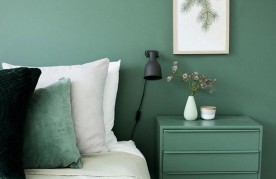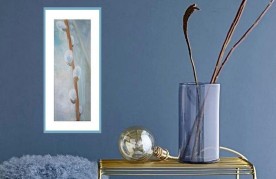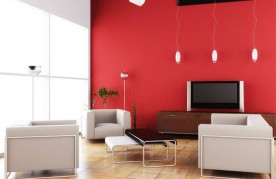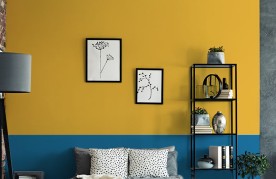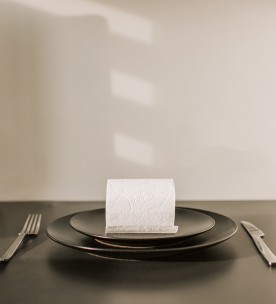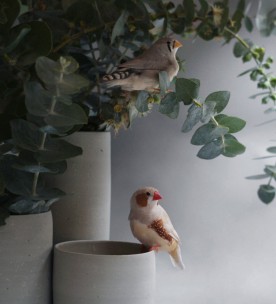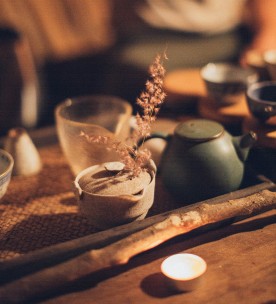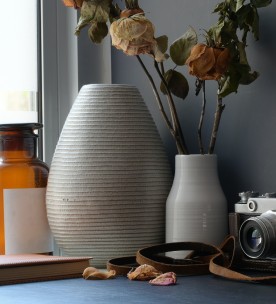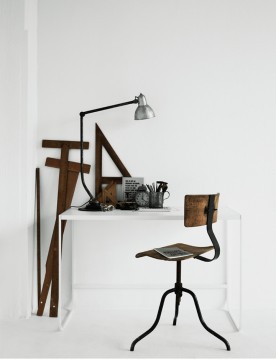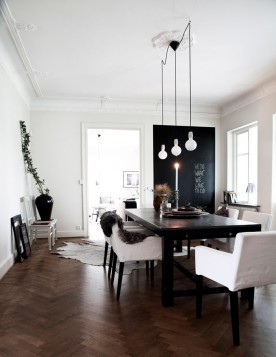Home Decor
- Dec 15 2021
Dining and Living Room Decor Ideas
Categories: DecorationYou can see colors, patterns and metal finishes online, but digital images are mere approximations of what the real things look like. Wherever possible, order color chips, fabric swatches and material samples to be sure finished products will meet your expectations. - Dec 08 2021
How to Decorate Your Home
Categories: DecorationMoving into a new home can be one of life’s great joys, but it can also be a time of uncertainty, especially when it comes to decorating. How do you make your space look its best while reflecting your personal sense of style? Do it well and you’ll end up with a comfortable, happy home. Do it poorly and you’ll end up with a hodge-podge of furniture, fabrics and paint colors that never congeal into a pleasing whole. With a little planning, and by following the same steps used by professional interior designers, you’ll have a much greater chance of success. - Dec 08 2021
Kitchens and Bathrooms
Categories: DecorationChanging kitchen counters is no small undertaking, but switching from an inexpensive material, like laminate, to a luxurious one, like marble, granite or quartzite, can significantly change the overall appearance of a kitchen or bathroom. The kitchen backsplash is another area ripe with opportunity. Even if you leave the existing counters in place, you can add or replace an existing backsplash using a favorite tile made from ceramic, glass, metal or cement. - Dec 08 2021
Bedroom Decor Ideas
Categories: DecorationIt’s called a bedroom for a reason: the bed is the key piece of furniture. As such, it should be given pride of place in the room, most likely with the headboard positioned against one wall and paths for walking on both sides. Don’t shove a bed in the corner,” if at all possible, said Nick Olsen, a New York City interior designer. “They’re impossible to make, and uncomfortable for two people to use. - Apr 11 2021
Detailed info on the Clay Bodies
Categories: CeramicsAll clays except terra cotta and sculpture are recommended for wheel.
Sand Clay. A finely grogged clay. This clay is beautiful, it looks like wet beach sand when left unglazed with a grainy, speckled surface. The speckles do not show through glazes and underglazes applied over this clay body but it will bring the color of glazes down.
Cone 6 Shrinkage 13.5% Absorption 3.0%Brooklyn red. Standard 308.
This is one of the most widely used clays in public studios for a reason. It is a brick red stoneware body with fine sand and fine grog. Very resistant to warping and bloating. Yields a beautiful dark reddish brick color and can bring depth and richness to the glazes applied to it.
Cone 6 Shrinkage 12.5% Absorption 2.0%Dark Brown Clay.
People love this clay because it is so dark. This clay creates major depth and richness in color as it greatly affects the glazes applied over it. The clay is smooth and plastic and good for all techniques. It may take longer to clean up your wheel splash pan with all the iron in this clay.
Cone 6 Shrinkage 13% Absorption 1.0%Porcelain. Wins most vitrified award meaning that this clay is nonporous and very food safe even without glaze. Porcelain boasts a super smooth and creamy texture and contains no grog. Glazes are bright and brilliant on this clay especially semi translucent glazes like celadons. Its a great choice if you are staining clay bodies with mason stains or oxides (Nerikomi/Agateware). It is however more prone to cracking while drying and warping than other clays but worth it to obtain the super white color. Recommended for intermediate to experienced potters.
Cone 6 Shrinkage 13.0% Absorption 0.3%White Stoneware. Fires a bright warm off-white color. This is a good clay for beginners because the glazes show up on it with very bright colors. This clay has some of the finest grog we have ever seen which enhances its throwing
- Apr 11 2021
Pigd's final three classes
Categories: CeramicsLast Friday’s Zoom topic is on for today. Betty Woodman!
Born in Norwalk, Connecticut, Betty Woodman attended the School for American Craftsmen at Alfred University in New York from 1948 to 1950. She has taught in the Fine Arts Department of the University of Colorado.
A leading ceramist whose inventive forms and painterly use of color have won her international renown, Woodman began her career making simple functional pottery. Although her ambitious experiments with clay have wrought great changes in her work, it still refers to some practical function even if her baroque, expressive forms are no longer strictly utilitarian. Woodman's art has been inspired by diverse sources, ranging from Etruscan and Minoa to Tange and majolica ceramics.
The recipient of fellowships from the National Endowment for the Arts in 1980 and 1986, Woodman has also been a guest artist at the experimental atelier of the Manufacture National de Sevres in France.
Kenneth R. Trapp and Howard Risatti Skilled Work: American Craft in the Renwick Gallery (Washington, D.C.: National Museum of American Art with the Smithsonian Institution Press, 1998)
Artist Biography
Betty Woodman first became interested in crafts because her father was a woodworker. In high school, one ceramics course was sufficient to convince Woodman that she wanted to be a functional potter. Studying pottery at the School for American Craftsmen at Alfred University, she developed a strong interest in the history of ceramics. Her first job after graduating in 1950 was as a production potter, and that technical facility and experience were to be the foundation of her subsequent innovations. In 1952 Woodman traveled to Italy, where exposure to traditions such as majolica opened her eyes to the potential of clay.
It was not until the seventies that Woodman completely abandoned h
- Apr 11 2021
How to plant your living pot
Categories: Ceramics551
Cone 6 White porcelain. Wins most vitrified award. Super smooth and creamy. Glazes are bright and brilliant on this clay. Great if you are staining clay bodies with mason stains or oxides (Nerikomi/Agateware).
Cone 6 Shrinkage 13.0% Absorption 0.3%630
Gray (White) Stoneware. This is the clay we used to provide in the communal buckets. Contains fire clay and mullite which (supposedly) enhances thermal properties. Fires grayish and the fired unglazed clay looks like white stoneware at cone ten. This is a good clay for beginners because the grog in the clay helps prevent cracking during drying. Some people have experienced bloating issues with this clay body.Cone 6 Shrinkage 13.0% Absorption 1.5%
240
Ivory (White) Stoneware.
A very smooth, plastic throwing body. This clay doesn’t have grog so it is more prone to cracking during drying, dry slowly to avoid this, not having grog allows you to sponge smooth this clay. 240 is a great clay for those who are nervous about trying porcelain but want a very smooth lighter colored clay. It is the brightest stoneware we have, it is very low in iron. The glazes show bright and clean on this clay.
Cone 6 Shrinkage 13.0% Absorption 1.5%420
Sculpture clay.
A highly grogged body, formulated for sculpture. Sand color at C/6.
This clay is a beautiful gray color when wet but don’t let that fool you, the clay fires a light straw tone. This clay is full of sandy gritty grog which can hurt some peoples hands when they throw with it. For this reason we do not recommend it for throwing (although some do). This clay is highly moldable and sticky. It is an excellent sculpture clay, producing works that dry evenly with less cracking and low shrinkage (only 8% vs the usual double digits).
Cone 6 Shrinkage 8.0% Absorption 1.5%259
Lite Brown Clay
a beautiful clay that is great for throwing. This clay is - Apr 11 2021
Info on Firings at Mouse
Categories: CeramicsMouse Ceramic Studio is currently offering firing services to all. We charge $0.04 per cubic inch to fire in a community firing. (Except for members), each time the work is fired, it must be paid for. Measure your piece with an inch ruler or measuring tape, you will need the length, the width, and the height, the length is the longest dimension of your piece (usually) from side to side, the width is usually front to back, and the height is the measurement from top to bottom or how tall it is. Each measurement needs to multiplied by the next so length x width x height. This will give you the cubic inches of the piece; take that amount and multiply by 0.04 to get your dollar amount. For example, a cup with handle that is 6x4x4 is 96 cubic inches; 96 x 0.04 = 3.84 so the total for this mug would be $3.84 per firing or $7.68 for bisque and glaze firing. Members only pay for bisque firings and glaze is included as a courtesy and benefit of membership.
- Categories: Home DecorThe amazing Lotta Agaton styled these pictures for Therese Sennerholt and her wonderful new collection of notebook.
- Categories: Home DecorThe home of stylist and photographer Daniella Wittе is wonderful and very inspiring, just like everything that Daniella does



